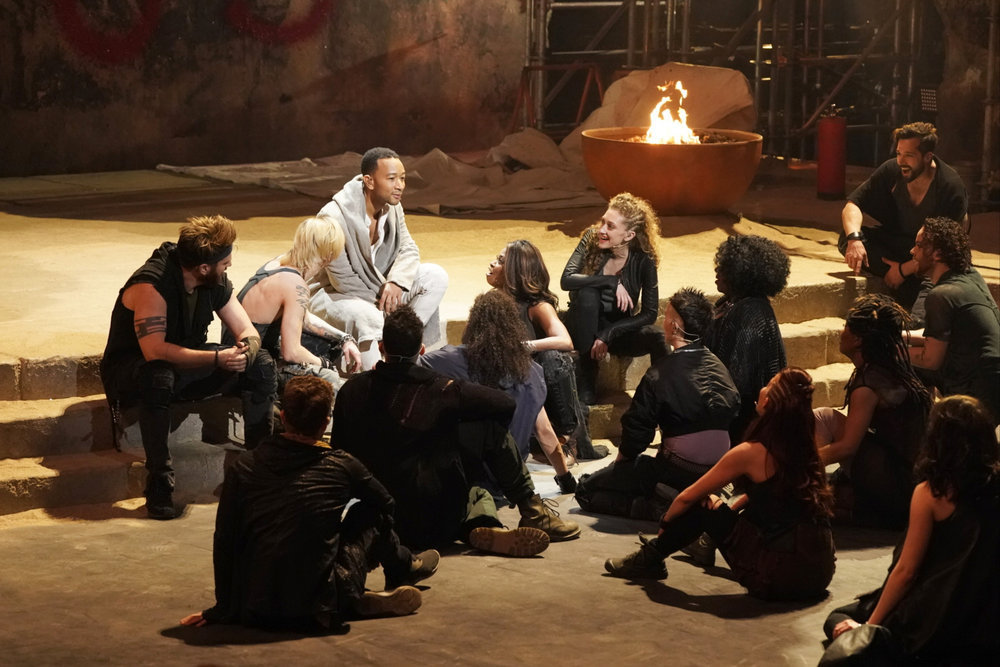
One of my close friends introduced me to Jason Robert Brown’s “The Last Five Years” when we were freshmen, and I’ve been listening to the original cast recording regularly ever since. I’ve never seen the stage musical itself, and that added degree of separation gave me an uncanny feeling while watching writer-director Richard LaGravenese’s film adaptation. The film was like an interesting person I’d heard lots about from mutual friends but had never directly interacted with. Our long-awaited meeting was pleasant, but not without its disappointments.
The film does succeed in adapting the musical’s narrative structure. The story, based on Brown’s own failed marriage, plays out as a series of vignettes, alternating between the husband and wife’s perspectives. Cathy Hiatt’s (Anna Kendrick) timeline begins at the end of her marriage to Jamie Wellerstein (Jeremy Jordan) and moves in reverse. Jamie’s timeline moves in chronological order from when the two start dating and intersects with Cathy’s at their wedding. The resulting tonal shifts are often wrenching, but they never feel unnatural. The director hews loyally to the arc of the musical and keeps its complicated emotional core intact.
LaGravenese does make one critical departure from the source. Stage productions keep Cathy and Jamie totally isolated until their storylines meet. The film translates this separation into stilted one-sided interactions between the characters. As one lover sings, the other stays mostly silent, reacting with gestures or minimal verbal responses. I found this stylistic choice bizarrely thrilling. It’s an ingenious way to illustrate two people growing apart.
There’s a great example of this at work that’s one of my favorite moments in the film. During “I Can Do Better Than That,” Jamie is driving with Cathy on his way to meet her parents. The shot is framed from the driver’s side of the car. Jamie is in the right of the shot, closer to the camera and looking off-screen toward the road ahead. Cathy sits against her side of the car and faces directly toward Jamie as she sings. At this point in the film we’ve been heavily reminded that their marriage goes south, and this 30-second shot creates an invisible but undeniable barrier between them.
Cinematographer Steven Meizler’s distinct use of color signals to the viewer which part of the timeline we’re in as the film progresses. Scenes set in the early part of Jamie and Cathy’s marriage are lit in the bright, glossy hues that befit their respective summers in New York and Ohio. As their relationship deteriorates, the color palette becomes noticeably funereal, with heavy emphasis on blacks, grays and strong shadows. The colors unsubtly embody the metaphorical death of the relationship. The aesthetic is effective in its simplicity.
Substance, not style, is where “The Last Five Years” runs into trouble. Jason Robert Brown’s music is lively and irresistible, but his lyrics only skim the surface of Cathy and Jamie’s marital woes. Only some of the songs address their deeper individual problems head-on, and even then it’s only through a few choice words.
“A Miracle Would Happen” gives Jamie the chance to playfully explain his temptation to pursue other women as his literary career takes off, and the corresponding sequence in the film offers one of the sharpest integrations of Brown’s music into the narrative. But later, the sinister lament “Nobody Needs to Know” fails to identify his issues with the marriage beyond a fleeting mention. Cathy’s challenges are similarly skimmed over.
The source material’s shortcomings reduce the plot to an unfortunate trope. Jamie’s infidelity is overemphasized, as is Cathy’s devotion to her husband. The musical is meant to identify flaws in both spouses, but the film ends up squarely pegging Jamie and Cathy as respective marital villain and victim. I could dig deep to interpret the hints that Brown’s songs drop about their evenly shared responsibility for the relationship’s collapse, but the film doesn’t present it in a way that makes me care.
Both Kendrick and Jordan deliver vibrant, committed performances, and have excellent musical chops to boot. The rub is that their characters aren’t especially interesting under close scrutiny. The immediate visual medium of film magnifies the musical’s unfortunate lack of depth. I accepted what was happening onscreen on the music’s merit, but the film felt largely like one long music video – an extended montage meant to be accepted without much questioning.
Jamie’s a rising novelist. Cathy’s a struggling actress. They’re falling out of love. I wanted to know them more intimately than that. Instead, I felt as if Brown and LaGravenese meant for me to simply go along with the overview they chose to show with a that’s-just-how-it-goes shrug. In that sense, my genuine enjoyment of “The Last Five Years” feels cheapened.
It’s tremendously easy to fall in love with the idea of someone. This is the reason for most of my romantic problems, and it’s an apt explanation of my feelings for “The Last Five Years.” I built up an admittedly romanticized idea of what the film adaptation would be and led myself to believe that there was a great deal of extra depth to the musical beyond its catchy collection of songs. The truth is that “The Last Five Years” looks and sounds pretty, but is ultimately a superficial exploration into broken romance.
Nathan Frontiero can be reached at [email protected].


















